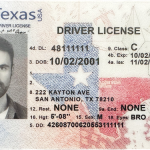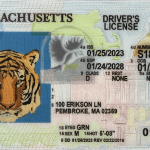In the competitive landscape of the cosmetics industry in 2025, loyalty programs have become a crucial tool for brands to retain customers and drive repeat business. However, ensuring the integrity of these programs by accurately verifying customer IDs is of utmost importance. This article will explore the various methods and technologies that the cosmetics industry is likely to employ for customer ID verification in loyalty programs in 2025.
Biometric Verification
One of the most advanced and secure methods of customer ID verification that is expected to gain significant traction in 2025 is biometric verification. Fingerprint and facial recognition technologies have become more refined and accessible in recent years, and the cosmetics industry is likely to leverage these advancements. For example, when a customer signs up for a loyalty program, they may be prompted to provide a fingerprint or have their face scanned. This biometric data is then stored securely in the brand’s database. When the customer later redeems points or makes a purchase to earn points, the system can quickly and accurately verify their identity by comparing the live – scanned biometric data with the stored data. This not only provides a high level of security but also a seamless and convenient experience for the customer.

Another form of biometric verification that may be explored is voice recognition. Customers could be asked to record a short voice sample during the sign – up process. In subsequent interactions, such as when contacting customer service to inquire about loyalty program benefits, the system can verify their identity based on the unique characteristics of their voice. This can be particularly useful for customers who may not be comfortable with fingerprint or facial recognition methods.
Mobile – Based Verification
Mobile devices have become an integral part of people’s lives, and the cosmetics industry is set to capitalize on this in 2025 for customer ID verification in loyalty programs. One common approach is two – factor authentication (2FA) via mobile phones. When a customer signs up for a loyalty program, they are required to provide a valid mobile phone number. During the sign – up process or when accessing certain loyalty program features, a one – time password (OTP) is sent to the registered mobile number. The customer must then enter this OTP to verify their identity. This adds an extra layer of security as even if someone were to obtain the customer’s login credentials, they would still need access to the mobile phone to complete the verification process.

Mobile wallets are also expected to play a role in customer ID verification. Brands can integrate their loyalty programs with popular mobile wallet applications. When a customer uses their mobile wallet to make a purchase at a cosmetics store, the wallet can communicate with the brand’s loyalty program system to verify the customer’s identity. This integration not only simplifies the payment process but also ensures that the customer’s identity is verified in a secure and convenient manner. Additionally, some mobile wallet apps may already have their own biometric verification methods, such as fingerprint or face unlock, which can further enhance the security of the loyalty program verification process.
Document – Based Verification
Although biometric and mobile – based methods are becoming more prevalent, document – based verification still has its place in the cosmetics industry’s loyalty program ID verification in 2025. When customers sign up for a loyalty program, they may be asked to provide a copy of a government – issued identification document, such as a driver’s license or passport. Brands can use optical character recognition (OCR) technology to extract relevant information from the document, such as the customer’s name, date of birth, and identification number. This information is then cross – referenced with other data sources, such as credit bureaus or public records databases, to verify the authenticity of the document and the identity of the customer.
For online – only loyalty programs, brands may also accept utility bills or bank statements as proof of address. The customer’s name and address on these documents are compared with the information provided during the sign – up process. However, it’s important to note that document – based verification has its limitations. For example, documents can be forged or stolen, and the process of uploading and verifying documents can be time – consuming for both the customer and the brand. Therefore, document – based verification is often used in combination with other verification methods for enhanced security.
Blockchain – Enabled Verification
Blockchain technology is making waves in various industries, and the cosmetics industry’s loyalty programs are no exception. In 2025, brands may start to use blockchain – enabled verification for customer IDs. Blockchain provides a decentralized and immutable ledger, which means that once a customer’s identity is verified and recorded on the blockchain, it cannot be easily tampered with. When a customer signs up for a loyalty program, their identity data can be hashed and stored on the blockchain. In subsequent interactions, the system can quickly verify the identity by checking the blockchain record. This not only provides a high level of security but also transparency, as both the brand and the customer can see the verification history.
Blockchain can also be used to manage loyalty points in a more secure and efficient manner. Each loyalty point transaction can be recorded on the blockchain, ensuring that there is no double – counting or fraud. For example, if a customer transfers their loyalty points to another account, the blockchain can track the transfer and update the balances accordingly. This can help to build trust between the brand and the customer and enhance the overall integrity of the loyalty program.
Common Problems and Solutions
- Problem: Technical Glitches in Biometric Verification
Solution: Brands should invest in reliable biometric verification systems from reputable vendors. Regular system maintenance and updates should be carried out to ensure smooth operation. Additionally, provide alternative verification methods, such as OTP – based verification, in case of biometric verification failures. - Problem: Mobile Number Portability and Verification
Solution: When relying on mobile – based verification, brands should have a process in place to handle mobile number portability. They can cross – reference with mobile network operators to ensure that the mobile number associated with the loyalty program is still valid and linked to the correct customer. Also, provide clear instructions to customers on how to update their mobile numbers in the loyalty program in case of a change. - Problem: Document Forgery in Document – Based Verification
Solution: In addition to using OCR technology, brands can implement advanced document verification techniques, such as watermark detection and hologram verification. They can also collaborate with document verification agencies to cross – check the authenticity of the provided documents. Furthermore, educate customers about the importance of providing genuine documents and the consequences of document forgery. - Problem: Privacy Concerns with Biometric Data
Solution: Brands should be transparent about their biometric data collection and usage policies. Obtain explicit consent from customers before collecting biometric data and ensure that the data is stored securely in compliance with relevant privacy regulations. Provide customers with the option to delete their biometric data if they no longer wish to participate in the loyalty program or have privacy concerns. - Problem: Integration Challenges with Blockchain Technology
Solution: Hire blockchain – savvy developers or partner with blockchain – technology companies to ensure seamless integration of blockchain into the loyalty program verification system. Conduct thorough testing and pilot programs before full – scale implementation to identify and address any integration issues. Provide training to employees on how to manage and operate the blockchain – enabled loyalty program system.
Fake ID Pricing
unit price: $109
| Order Quantity | Price Per Card |
|---|---|
| 2-3 | $89 |
| 4-9 | $69 |
| 10+ | $66 |



